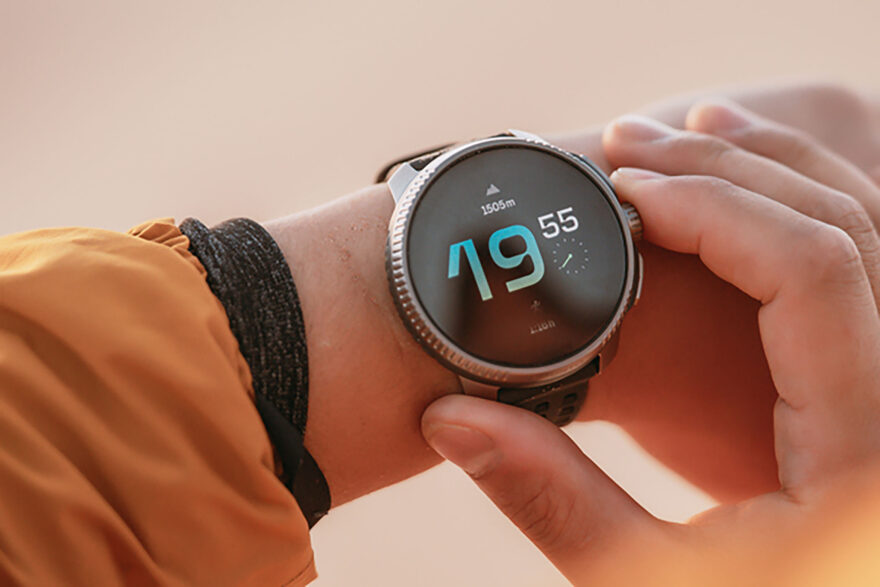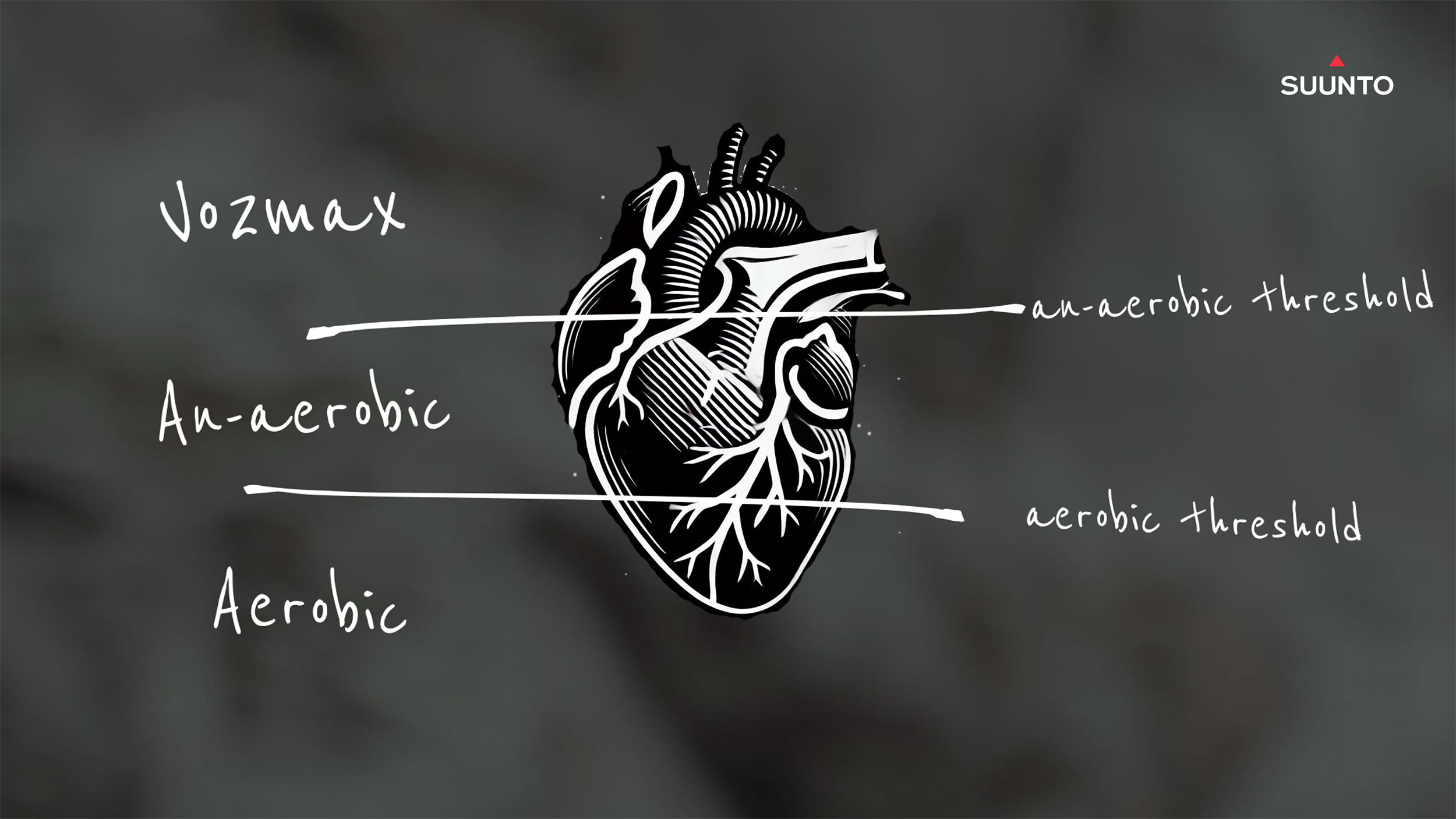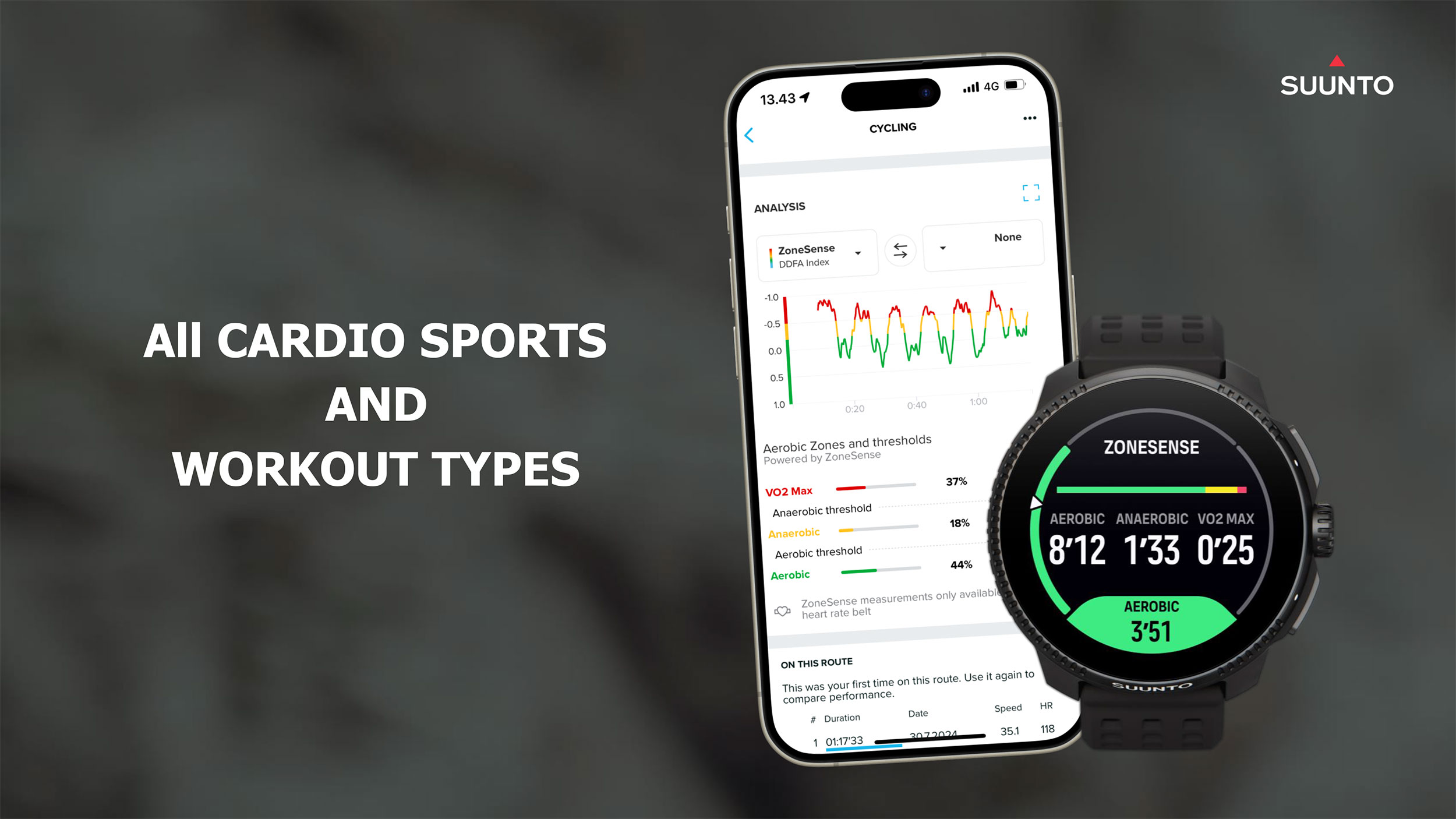
Image courtesy of Suunto
This free SuuntoPlus app allows athletes to measure cardio activity intensity without the need of a lab.
To dial more precisely into exercise intensity, Suunto has launched the pioneering ZoneSense technology — an innovation that leverages advanced heart rate variability (HRV) analyses to measure stress levels of the heart. The result, with real game-changing potential in this industry, is that athletes gain real-time (and more personalized) insights into their training and can capitalize off a better understanding of their aerobic, anaerobic, and VO2 max levels.
This is vital because in endurance training — like trail running, cycling, mountaineering, and other such sports that Suunto is known for — the correct intensity of each workout is crucial for achieving optimal results.
ZoneSense has become available today as a SunntoPlus app.
The company points to the fact that traditional training-accuracy methods often require invasive and cumbersome testing protocols, such as blood samples or gas masks, making them impractical for daily use. Not to mention factors such as activity type, sleep, nutrition, heat, humidity and altitude that make it difficult to consistently maintain one’s training level when relying on pace or power at the primary metric.

Image via Suunto
Using features discovered with Dynamical Detrended Fluctuation Analysis (DDFA), ZoneSense correlates athlete stress levels with metabolic states, such as aerobic and anaerobic thresholds. This allows athletes to accurately gauge their effort and intensity levels without the need for manually inputting individual metrics or performing external testing.
ZoneSense will lead the way in finding the levels that suit each athlete best.
“It’s personal, it will learn about you, and it will get more precise as you are using it more,” Janne Kallio, head of partner product management, said during a pre-launch webinar.
While it’s well recognized that HRV measures the variation in the time intervals between consecutive heartbeats and, by analyzing the fluctuations in these intervals, it is possible to gain insights into the body’s state. DDFA, however, takes that a step further and excels in assessing real-time changes in the heartbeat correlations during exercise.
And Suunto and its partners have been able to summarize this into one value.
“Training intensity directly correlates with time- and scale-dependent variations in the DDFA scaling exponent,” the company noted. “Research indicates that increasing intensity in physical exercise decreases the scaling exponents. Eventually, at very high intensities, the beat-to-beat intervals may show so-called anticorrelations, where large and small beat-to-beat intervals alternate in a specific manner depending on the time scale.”

Image via Suunto
This information allows for more precise monitoring of exercise intensity and physiological thresholds. It will be enabled for every cardio-formatted activity.
“Each new workout is used to understand your personal sport specific baseline level of the DDFA,” Suunto said. “This will make the ZoneSense analysis more accurate over time.”
The older workouts prior to enabling ZoneSense will have ZoneSense data, but as these do not include personal baseline analysis, the ZoneSense has an error that can shift the ZoneSense graph 10 percent to 20 percent higher or lower.
Suunto added that for new workouts, the ZoneSense DDFA index cannot be measured accurately during the first 10 minutes of an activity as the body is still warming up and finding its intensity balance. The real-time measurement and after-analysis will therefore not show the data during this time.
This new function can be used by saving the ZoneSense Sports app from the SuuntoPlus Store to a Suunto watch and including a heart rate belt during a workout. The next time you start your workout, select ZoneSense to activate it.
The ZoneSense SuuntoPlus sports app will show your intensity graphically as green, yellow and red, with cumulative time in zones as the default setting. An athlete can press the upper right button on the watch to change the fields shown, like to follow other values such as pace, vertical, speed, or power.
Live measurements will be available at launch on the four latest Suunto sportwatches: Race S, Race, Vertical and 9 Peak Pro. The dive-centric Suunto Ocean will begin real-time data support for ZoneSense later this autumn. It is free to install.
Additionally, ZoneSense will be available for post-analysis in conjunction with a heart rate belt on older models, such as Suunto Ambit and Spartan.
The ZoneSense features were developed and validated by MoniCardi, a spin-off of Finland-based Tampere University specializing in cardiac monitoring with advanced time-series analysis methods. This marks the first time that this patented technology is being used in a wearable device. Suunto and MoniCardi say that this partnership presents a significant step forward in intelligent heart measurement.
“MoniCardi has conducted years of research on advanced time-series analysis methods and heart behavior, in both exercise and daily life, revealing new insights in the medical and sports domains,” said Esa Räsänen, CEO of MoniCardi. “Having Suunto as the first company to onboard our research is a great step forward in advancing heart measurement in wearables.”

Image via Suunto
Any heart rate belt that provides beat-to-beat data can be used with ZoneSense, but only Suunto’s HR belt works in swimming because of its inbuild memory. An HR belt is required because they measure the electrical activity of the heart and are recognized as the most precise way to measure heart rate, especially during intense activities.
“This requires understanding the exact information of where the heart-rate beats and where are the peaks, to understand the data of the timing between the beats,” Räsänen said during the webinar.
Optical heart rate monitors, on the other hand, have varying degrees of accuracy and can only reliably perform this type of measurement at rest, such as during sleep.
Ultimately, ZoneSense and the DDFA index attempt to bring more consistency to intensity and heart levels amid external factors such as environment and health that can cause disruptions.
Ryan Tipps is Managing Editor for ActionHub. He lives along the Blue Ridge Mountains, is an avid hiker, backpacker and trail runner and has been a part of the wilderness search and rescue community since 2005.
 Your Privacy Choices
Your Privacy Choices